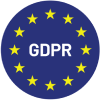Quick Summary
- Each type of metric tells its own story, but they work together to provide a fuller picture of how your customers view you.
- Combining all three metrics in CX dashboards and driver analysis helps you understand what impacts loyalty and what causes churn.
- Timing is critical to capture honest and accurate sentiment.
The Importance of Measuring Customer Sentiment
Measuring customer sentiment about your brand is key to growth and retention. By monitoring your Net Promoter Score (NPS), Customer Satisfaction Score (CSAT), and Customer Effort Score (CES), you get a more complete picture of customer experience (CX), as each answers a different question about loyalty, satisfaction, and ease of interaction.
It’s important to match the metric to the moment:
- NPS for relationship health
- CSAT for transactional satisfaction
- CES for effort in completing tasks
Taken together, these metrics give you a holistic picture of what drives customer loyalty and where you need to act.

What Each Metric Measures
When comparing NPS vs. CSAT vs CES, you need to understand how each works and what they tell you about your customers.
Net Promoter Score (NPS)
NPS measures customer loyalty and advocacy through one simple question: “How likely are you to recommend our company to a friend or colleague?” Responses range from 0 to 10, classifying customers as:
- Promoters (9–10)
- Passives (7–8)
- Detractors (0–6)
You calculate the score by subtracting the percentage of detractors from promoters.
It’s a great tool for benchmarking long-term relationship health and predicting growth. On average, industry leaders in NPS grow more than twice as fast as competitors.
Pro Tip: NPS is simple to understand and executive-friendly, but you want to watch out for over-reliance on the metric itself without understanding what drives NPS and developing actions for improvement.
Customer Satisfaction Score (CSAT)
CSAT measures how happy customers are with a specific interaction, product, or service, typically via a 1-5 or 1-7 scale, often reported as the percentage of satisfied or very satisfied responses. It’s highly flexible and best used for immediate, post-event feedback, such as after onboarding, purchase, or support.
Because it’s sensitive to change, CSAT is excellent for evaluating process tweaks or new feature rollouts. The key here is timing. Your surveys should come right after the customer’s experience for accuracy.
Pro Tip: CSAT is sensitive to timing, so make sure questions are clear and you trigger these surveys as close as possible to the event.
Customer Effort Score (CES)
CES shows how easy (or hard) it was for customers to complete a task. This could be navigating your checkout process, resetting a password, or resolving another issue. The goal is to identify the friction points that lead to churn.
CES has a powerful predictive quality. 96% of customers reporting a high-effort experience say they’re likely to switch to a competitor, while customers who experience low effort are 94% more likely to buy again.
Pro Tip: CES helps you predict loyalty when you remove friction. You want to clearly define the scope to avoid any ambiguity.
When to Use NPS vs CSAT vs CES
While each is a snapshot in time, when you measure is important to accurately capture customer sentiment. You’ll want to map stages in the customer journey and assign the metric best-suited for improvements needed at various touchpoints.
Use NPS for Relationship Health
Most companies measure NPS either quarterly or twice a year to get an idea of overall loyalty and brand advocacy. It works best as a high-level check-in and a rolling benchmark to look for positive or negative trends.
Deploy CSAT at Transactional Moments
CSAT helps you measure customer satisfaction at critical touchpoints like onboarding a new customer, after a delivery, or when dealing with support. These short, targeted surveys capture immediate impressions while the experience is fresh.
Trigger CES After Key Tasks
Measure CES when customers complete a process to surface friction points. You want to identify any barriers that lead to lost sales or churn for fast resolution.
Combining these metrics across customer journeys makes them even more valuable:
- Product onboarding: Pair CSAT and CES to gauge how satisfied users are with the process and how much effort it took.
- Customer support: Send CES to measure ease of resolution, then CSAT to assess satisfaction with an agent’s help.
- Executive views: Keep NPS as the overarching loyalty trend, while linking CSAT and CES to specific teams or initiatives for accountability.
However, you need to avoid “survey fatigue.” Stagger your touchpoints to avoid frequency from impacting response and results.
Combine Metrics and Drive Action
While each metric tells a different story, the real power is how NPS vs. CSAT vs CES work together. Key strategies include:
- Unifying metrics in a dashboard to monitor trends and insights, providing that single source of truth you need. This helps you see the impact one metric has on others and prioritize fixes.
- Adding follow-ups to understand the reason behind the score. You need to know what affected the scores to know what to focus on first.
- Run Key Driver Analysis alongside metric questions to understand which attributes most influence satisfaction.
- Slice data by customer type, region, or product line to identify unique trends.
- Close the loop by setting alerts for low scores and assigning ownership to address problems.
- Continue to refine your phrasing and frequencies based on participation rates. You should always be looking for ways to improve response rates.
Finally, communicate. When your customers identify an issue and see you’re willing to change, you can often turn them from detractors into promoters.
NPS vs CSAT vs CES: Complementary Tools
Match each metric to its moment, and then combine them for a more holistic view. When you identify issues, follow-up fast and look for the underlying causes. When you measure what matters and evolve as customer sentiment changes, you can make a real impact.
FAQs About Customer Sentiment Metrics
What’s the difference between NPS, CSAT, and CES?
NPS measures long-term loyalty. CSAT? Immediate satisfaction. CES? How easy it is to get things done.
When should each be sent?
NPS works best quarterly or twice a year. CSAT should follow key interactions, while CES should trigger as tasks are completed.
How can open-text and driver analysis improve results?
They reveal the “why” behind scores, uncovering the root causes of dissatisfaction or loyalty.
What’s the best way to view all three metrics together?
Combine them in a CX dashboard to monitor trends and improvements.












